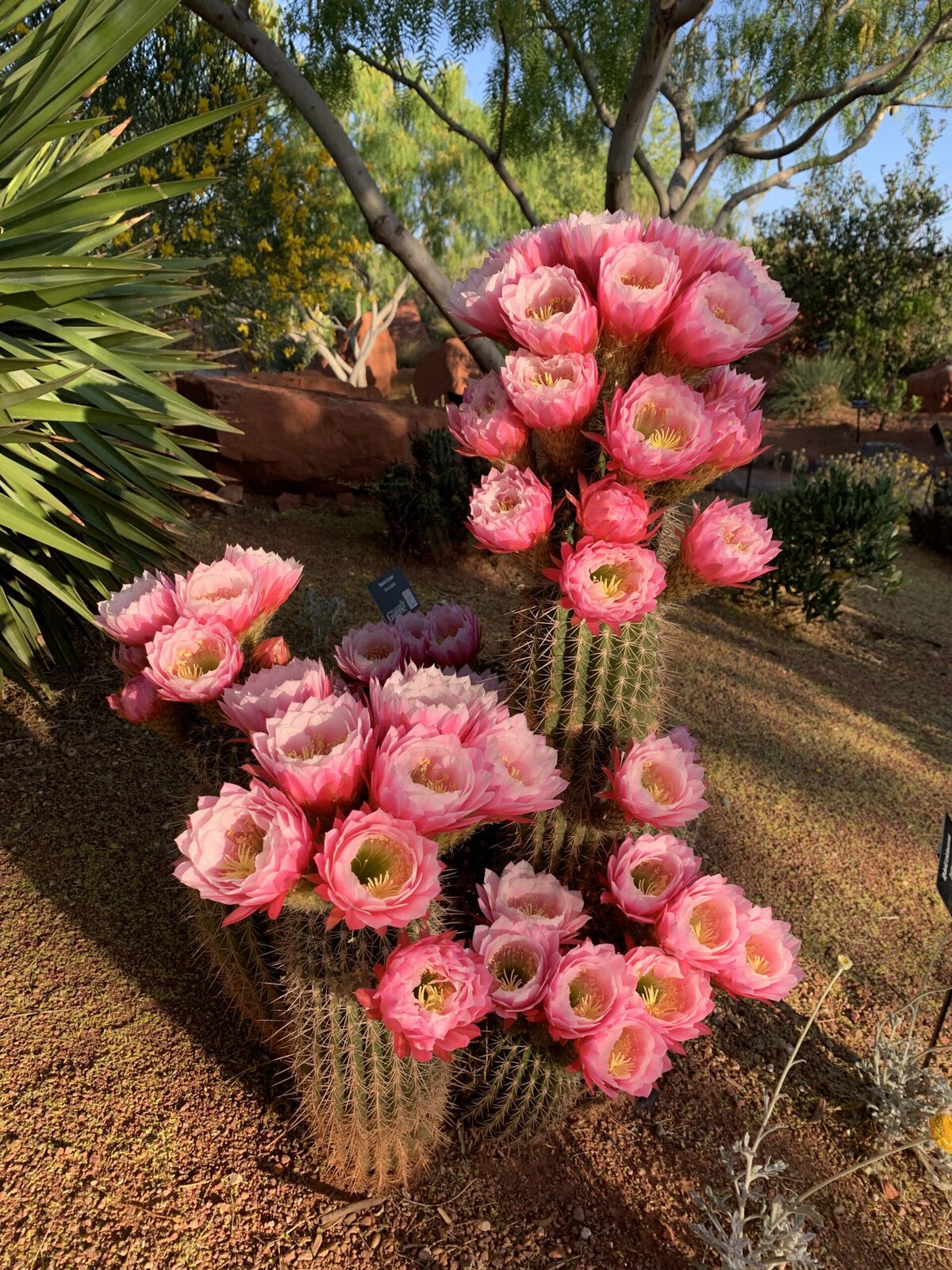The payout is $2 per square foot of converted turf, up to 5,000 square feet. After that, the rate is $1 per square foot. That money is cost-shared between the Washington County Water Conservancy and the state of Utah, which matches the county dollar for dollar. The Utah Legislature allocated $8 million dollars to launch the program, with $3 million recurring annually. To maintain and grow the program, proponents are requesting an additional $12 million from the state legislature.
Participants can select from an extensive list of native plants that are adapted to need less water, including fragrant sagebrush, yucca, succulents and wildflowers like the firecracker penstemon. There are some specific parameters to qualify for the program, such as installing drip irrigation. Mulch must be placed on the soil’s surface to reduce evaporation. At maturity, plants must cover 50 percent of the project area. Non-permeable barriers like concrete and plastic are not permitted because they prevent rainfall and air from passing through the soil. Bennett notes, “We want the plants to thrive!” Artificial turf is allowed, so long as it has perforations for water and air. The program also requires a conservation easement for the property, to ensure that current or future residents will never return grass to the project area.

To date, 2,044 applications have been submitted and 918 projects completed in Washington County. “We’re projecting that by the end of 2024, our program participants will have transformed enough nonfunctional lawn to be equivalent to a roll of sod about 280 miles long,” Bennett says. “Collectively, these projects should reach 100 million gallons in annual savings by year’s end.” That is enough water to supply 520 single family households.
Bennett recognizes that increased education will boost public participation. He recalls the slow start when Las Vegas launched a similar program: “In 2000, nobody cared. Then in 2002, the drought was so severe that the Colorado River produced just 25 percent of its typical runoff.” (That same drought across the Southwest has persisted for two decades and is known to be the worst in 1,200 years.) Twenty-two years later, Las Vegas’s daily per capita water use has been cut in half. “It was unprecedented for a community [to] save that much without actually just shutting off the water,” Bennett says.
Since 2000, Washington County has reduced per capita water use by 30 percent, the most significant decrease in Utah. Bennett attributes this success to the realities of living in the desert: “Our residents live on the northern edge of the Mojave Desert, and it’s pretty conspicuous by the native terrain,” he explains. In other words, they have “relatively high awareness of the scarcity of water” they face because the landscape itself provides constant reminders.
That’s not the case elsewhere in Utah. “The other major population centers are in the northern part of the state, characterized by mountain ranges, cold and snowy winters and a perception of water abundance,” Bennett says. “Most recently, drought conditions that affected the Great Salt Lake have escalated awareness of hydrologic conditions in northern Utah.”


Despite Washington County’s per capita water savings, because of its rapid growth and development, its overall water use has still increased by 15 percent since the turn of the century. In short, existing water conservation measures do not fully offset the pressure that growth is putting on the water system. This has pushed the county to set the strictest ordinances for new construction and landscaping in Utah. The county now limits lawns to eight percent of property size on all new residential developments. There is a total ban on “nonfunctional grass” at new commercial, institutional and industrial developments. This even prevents new golf course developments. (The caveat is that golf course developers must come up with their own non-potable water source and secondary recycled water sources for irrigation.) The county also reuses water to irrigate public spaces like parks, schools, golf courses and county facilities.
Through turf buyback and other conservation measures, Washington County aims to reduce per capita water use by another 14 percent by 2030. The county also has a 20-year plan to diversify and conserve water sources, which includes tiered water rates, water recycling and education.


